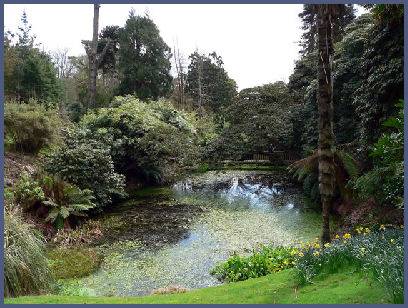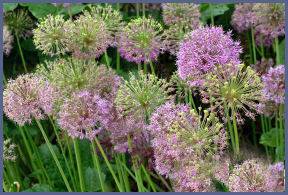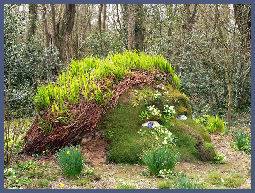The Lost Gardens of Heligan
OS Grid ref:- SW 9946
 At Heligan, the seat of the influential Tremayne family for more than four hundred years, one of the largest restoration projects in Europe was begun in Cornwall in the spring of 1991. A neglected garden had been discovered beneath undergrowth and rubble near the village of Mevagissey . Where it had lay hidden since the final years of the First World War.
At Heligan, the seat of the influential Tremayne family for more than four hundred years, one of the largest restoration projects in Europe was begun in Cornwall in the spring of 1991. A neglected garden had been discovered beneath undergrowth and rubble near the village of Mevagissey . Where it had lay hidden since the final years of the First World War.
At the outbreak of the war, Heligan was taken over by the War Office during the war years and was used by them as a convalescent home for officers.
Following the end of the war, of the 22 former garden staff employed by the Tremayne family, only around 6 survived the battlefields of Flanders to return to Heligan. The house was returned to the Tremaynes in 1919, who found they could no longer afford the cost of such a large staff and came to the decision to rent the house out. The gardens were not maintained and gradually fell into neglect and decline.
A restoration project began, which was the subject of a six part Channel 4 television series in 1996, the following year the restored gardens were later opened to the public.
Set in a sheltered valley and warmed by the Gulf Stream the gardens contain many rare and exotic plants and cover eighty acres in all. The Lost Gardens of Heligan are now one of the most popular in Britain.
The gardens contain a superb collection of mature rhododendrons and spectacular camellias and the huge herbaceous border there was described as the finest in England in Victorian times. There are also some outstanding specimen trees, among the most noteable are the World's largest Japanese Black Pine (Pinus thumberg),Chinese Cedar (Cedrella sinensis), and Chilean Yew (Podocarpus totara).
 There are also a series of highly attractive lakes, a striking Italian garden, flower and
vegetable gardens and an impressive wild area, known as 'the Jungle' which hosts a riot of
outstanding trees and luxuriant foliage and contains primaeval-looking sub-tropical tree ferns. Set in the microclimate of a steep-sided valley,
a new boardwalk snakes down through bamboo tunnels,
palm-lined avenues, around four ponds and a cascading
stream.
There are also a series of highly attractive lakes, a striking Italian garden, flower and
vegetable gardens and an impressive wild area, known as 'the Jungle' which hosts a riot of
outstanding trees and luxuriant foliage and contains primaeval-looking sub-tropical tree ferns. Set in the microclimate of a steep-sided valley,
a new boardwalk snakes down through bamboo tunnels,
palm-lined avenues, around four ponds and a cascading
stream.
 The gardens also have the figures of the Mud Maid and the Giant's Head, which are made up from rocks and plants.
The walled sundial garden was opened in 1997.
The gardens also have the figures of the Mud Maid and the Giant's Head, which are made up from rocks and plants.
The walled sundial garden was opened in 1997.
The Lost Valley, the most recent addition to the gardens, was opened to visitors in 1998, a circular walk of around a mile now incorporates the Medieval Sunken Lane and additional sections of the original Georgian Ride. Work in this area is ongoing.
The Horsemoor Hide, designed in 2001, is a pioneering Wildlife Interpretation Centre, where 'live' images of Heligan wildlife are displayed on indoor plasma screens, draws the visitor into the dramas of life in the natural world in an intimate and unedited manner, as they occur.
Large car park and tea rooms. Dogs, except guide dogs, are not permitted in the gardens.